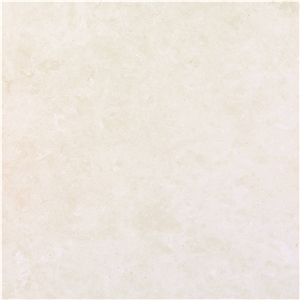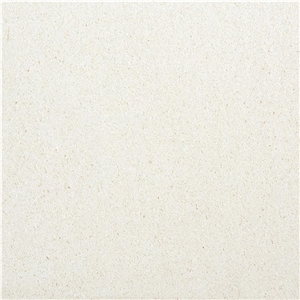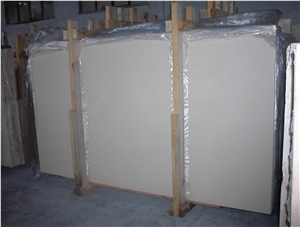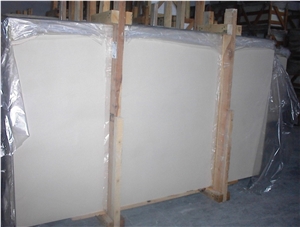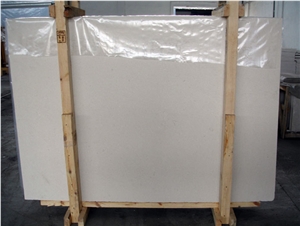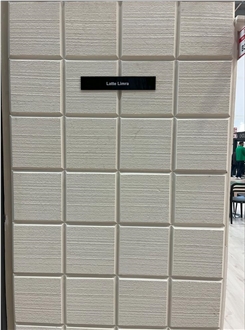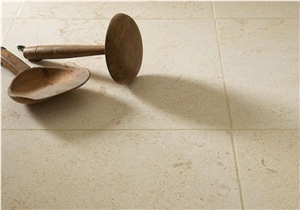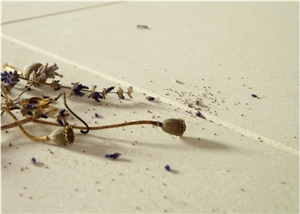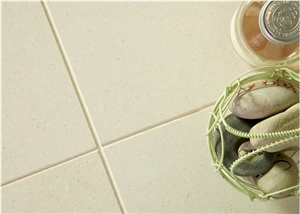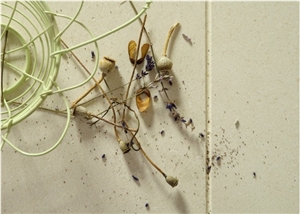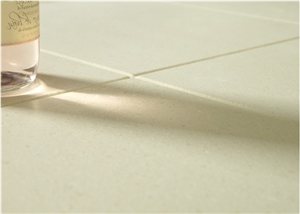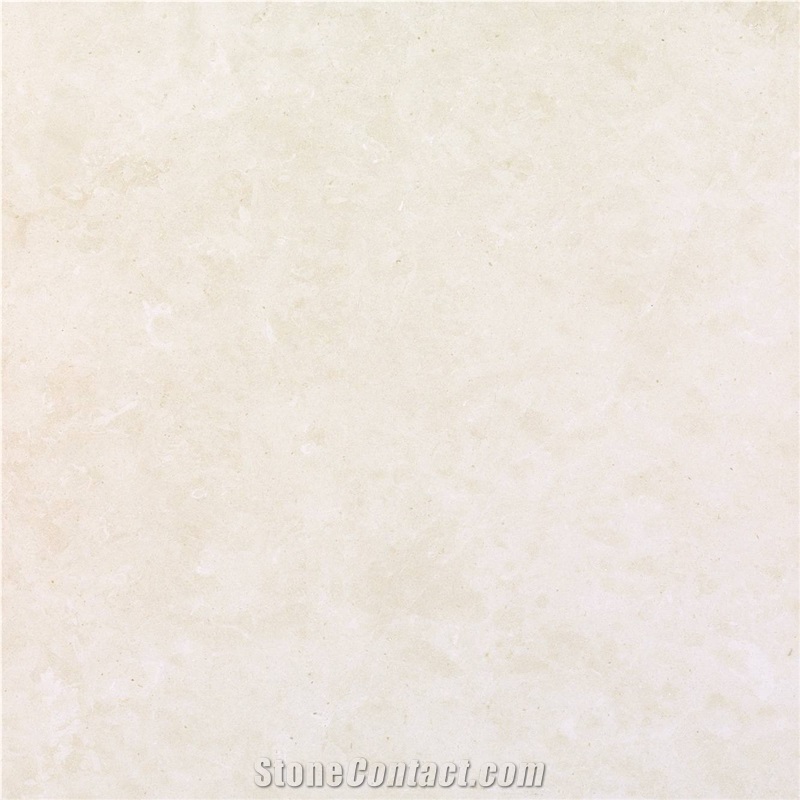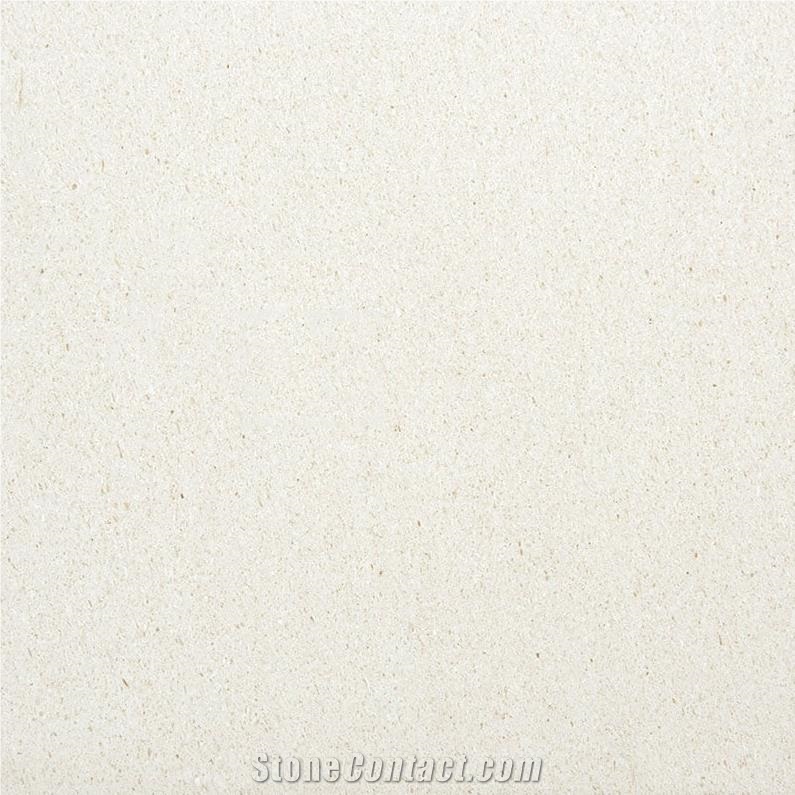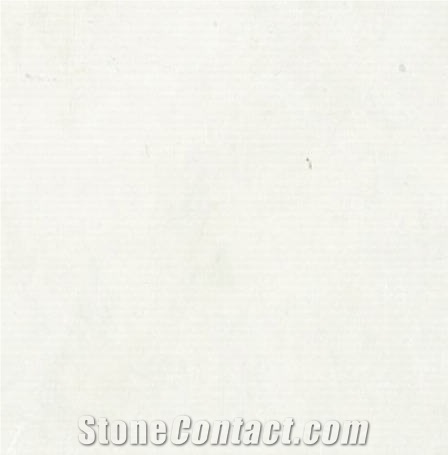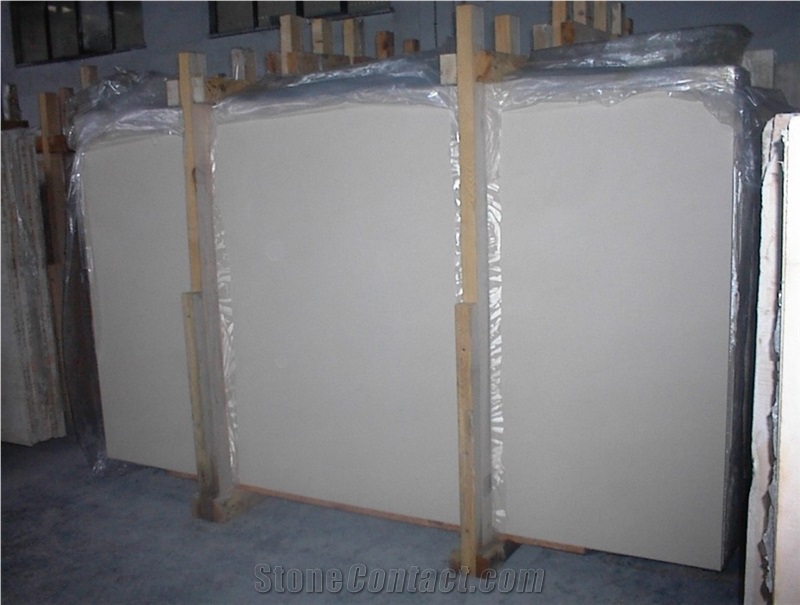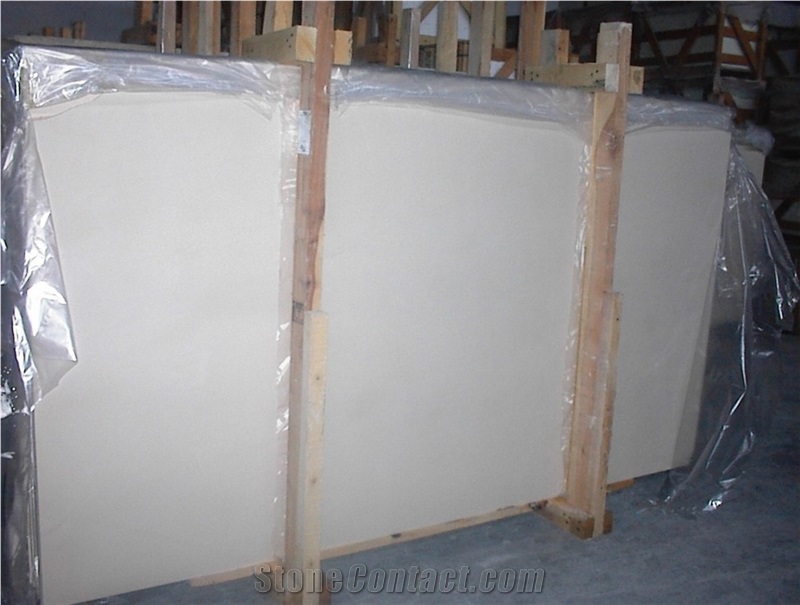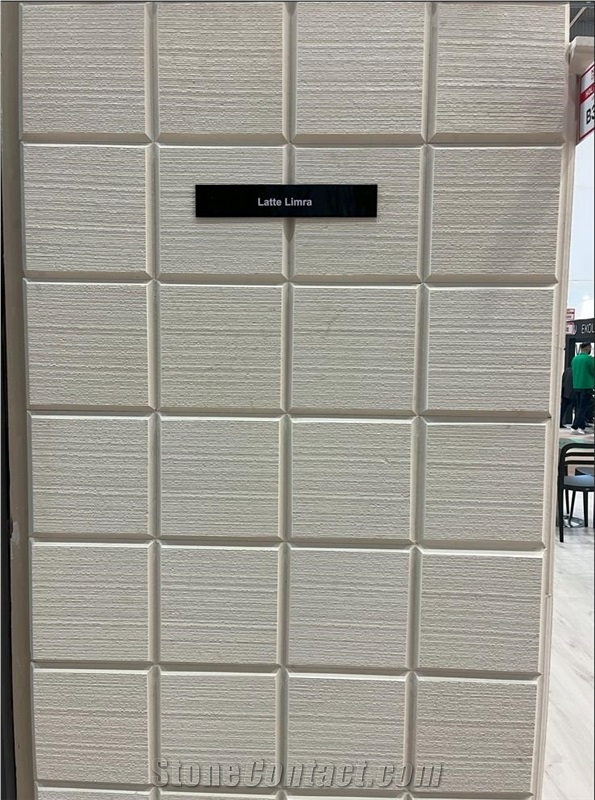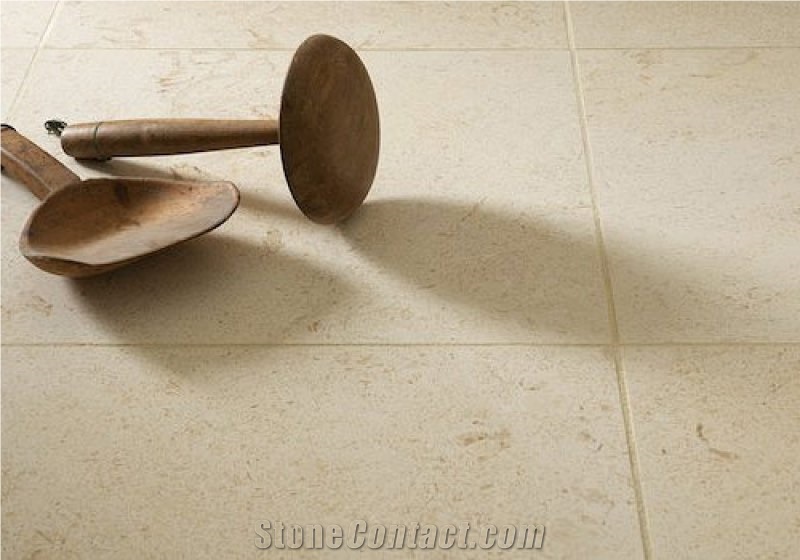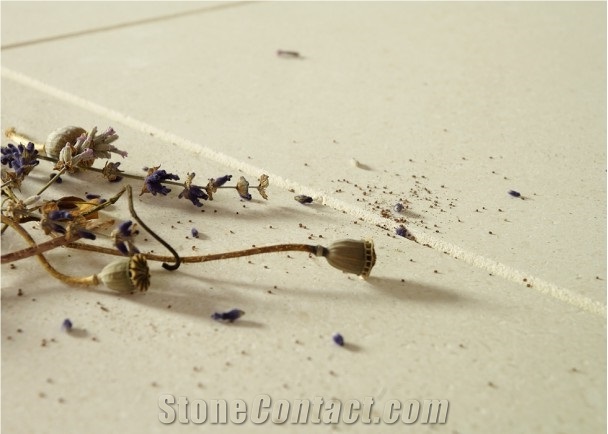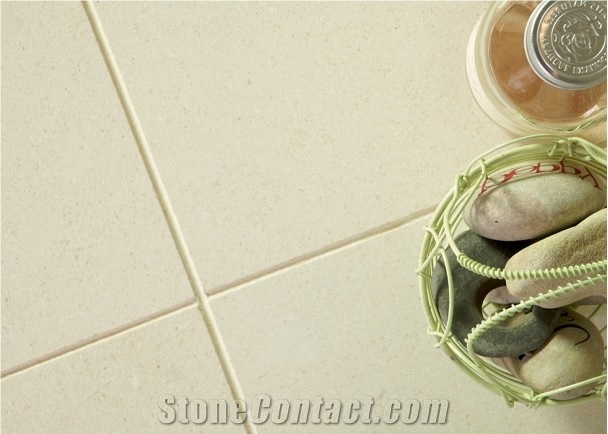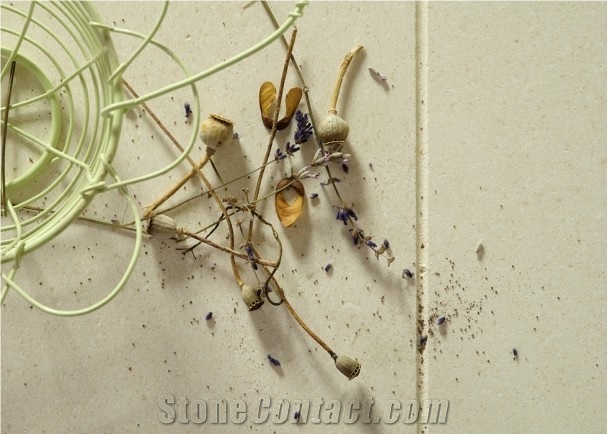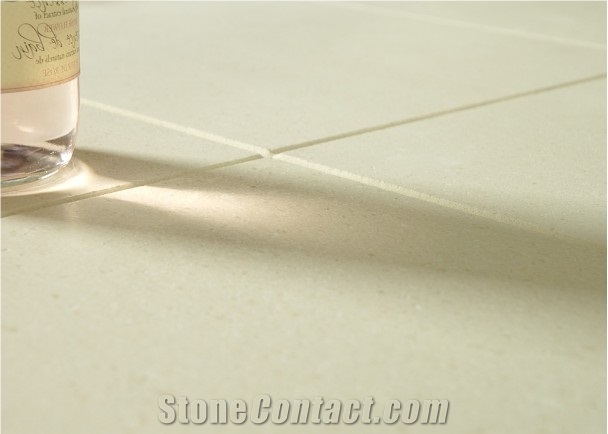Limra Limestone
 Turkey
(Finike-Demre, Antalya)
Turkey
(Finike-Demre, Antalya)
Limra Limestone is a well-known natural stone that originates from the Limra region in Turkey. It is highly regarded and widely used in the construction industry for its exceptional quality, elegant appearance, and versatility. Limra Limestone has been used for centuries in various architectural projects, both historical and modern.
Appearance: Limra Limestone is characterized by its light and creamy color palette, ranging from soft white to pale beige. It showcases a consistent and uniform background, devoid of strong veining or patterns. The stone's uniformity allows for a clean and minimalist look, making it a popular choice for contemporary designs. The light color of Limra Limestone creates a bright and open ambiance in interior spaces, providing a sense of airiness and sophistication.
Texture and Finish: Limra Limestone typically has a smooth and honed texture that showcases its natural beauty. The honed finish gives the stone a matte appearance, while also offering a velvety touch. This finish is commonly preferred for interior applications, including flooring, wall cladding, and countertops. However, other finishes such as polished or brushed may also be available depending on the desired aesthetic and project requirements.
Durability and Strength: As a limestone, Limra Limestone possesses good durability and strength, suitable for a variety of applications. However, it is important to note that limestone is a relatively softer stone compared to granite or marble, which means it may be more susceptible to scratching and abrasion. Therefore, proper care and maintenance, including regular sealing, are recommended to preserve its appearance and protect against staining.
Applications: Limra Limestone is widely used in both residential and commercial projects due to its versatile nature. It is a popular choice for interior flooring, especially in areas where a light and neutral color scheme is desired. The soft and consistent appearance of Limra Limestone can create a sense of spaciousness and elegance in living spaces, hallways, and common areas.
Limra Limestone is also commonly utilized for wall cladding, providing a timeless and refined look to both interior and exterior walls. Its light color helps to reflect natural light, contributing to a bright and inviting atmosphere. Additionally, it is suitable for creating architectural features, such as columns, fireplaces, and decorative accents, adding a touch of sophistication to any design.
Quarrying: Limra Limestone is quarried from the Limra region in the Antalya province of Turkey. The region is known for its rich limestone deposits and has a long history of quarrying this particular stone. Skilled quarry workers extract large blocks of Limra Limestone from the earth using modern quarrying techniques and equipment. The blocks are then cut into slabs or customized into various shapes and sizes, ready for use in construction and design projects.
In conclusion, Limra Limestone is a prized natural stone quarried in the Limra region of Turkey. Its light and creamy appearance, along with its durability and versatility, make it a popular choice for a range of architectural and design applications. Whether used for flooring, wall cladding, or decorative elements, Limra Limestone adds a touch of elegance and sophistication to both residential and commercial spaces.
Chemical Analysis
Al 2O 3 % 0.25
CaO %54
Fe 2O 3 %0.07
K 2O -
MgO % 0.8
SiO 2 %0.15
SM %0.47
ALM %3.57
Loss on Ignition %42
TOTAL 97.27
Not measurable ,% 2.73

Does vinegar damage Limra Limestone floor?

Is Limra Limestone durable for use as outdoor terrace pavers?

What is the minimum depth of exterior Limra Limestone stairs?

How wide is a standard Limra Limestone window sill?

Can Limra Limestone be used as a kitchen cutting board?

Is Limra Limestone resistant to mold?

What are the three main types of Limra Limestone Greek columns?

Does Limra Limestone scratch easily?

Are Limra Limestone mosaic tiles good for bathroom floor?

Can Turkey's Limra Limestone be used exterior applications in very sunny climates?

What cement to use for Limra Limestone steps?

Can Turkey's Limra Limestone be used indoors?

What size should an Limra Limestone outdoor step be?

What is the difference between Limra Limestone Doric and Corinthian columns?

Is Limra Limestone good for exterior urban steps?

Is Limra Limestone good for interior steps?

What is the standard thickness of a Limra Limestone mosaic round medallion?

Does Limra Limestone need sealed?

Can Turkey's Limra Limestone be used in wall coverings?

Are honed Limra Limestone steps slippery?

What is the standard diameter of a Limra Limestone mosaic round medallion?

How do I clean a Limra Limestone fireplace mantel?

Is Limra Limestone good for table tops?

Can Limra Limestone be used for swimming pool coping?

What is the coefficient of friction of Water Jet Cut Turkey's Limra Limestone tiles?

What standard size are Limra Limestone Versailles pattern pavers?

What thickness should a Limra Limestone window sill be?

Is Turkey's Limra Limestone an expensive stone?

Is Limra Limestone good for window sills?

How thick is Limra Limestone for exterior steps?

How do I clean Limra Limestone without damaging it?

How can I repair the scratched surface of the Limra Limestone tiles?

What are the most popular Limra Limestone mosaic tile patterns?

How do I clean Limra Limestone window sills?

What is the difference between Limra Limestone baseboard and moulding?

What are the types of Limra Limestone molding border designs?

What size Limra Limestone treads for exterior stairs?

Is Limra Limestone resistant to heat?

Are there color variations of Turkey's Limra Limestone?

Are Limra Limestone mosaic tiles good for backsplash?

How thick is Turkey's Limra Limestone slabs?

How thick should outdoor Limra Limestone paving tiles be?

Is Limra Limestone stronger than sandstone?

Is Limra Limestone tile good for a backsplash?

Can Turkey's Limra Limestone be used in a living room?

What is the difference between Limra Limestone trim and border?

What are the different types of traditional Limra Limestone columns?

What cement to use for Limra Limestone mosaic tiles?

Is Limra Limestone good for a fireplace?

What is the difference between Limra Limestone Doric and Ionic columns?

What grade is Turkey's Limra Limestone?
-

H.S STONES FOR MARBLE & GRANITE
 Egypt
Egypt
 1YRDiamond members are premium members on platform, providing members with comprehensive approach to promoting their products, increasing products exposure and investment return to maximize.
1YRDiamond members are premium members on platform, providing members with comprehensive approach to promoting their products, increasing products exposure and investment return to maximize.
 Verified Supplier is for prove company authenticity,including business license,trade license and effective office space,to enhance buyers' trust to suppliers and their products, reducing communication costs.
Verified Supplier is for prove company authenticity,including business license,trade license and effective office space,to enhance buyers' trust to suppliers and their products, reducing communication costs.
Contact Supplier
-

F-A MERMER GRANIT IC VE DIS TICARET SAN. LTD.
 Turkey
Turkey
 12YRDiamond members are premium members on platform, providing members with comprehensive approach to promoting their products, increasing products exposure and investment return to maximize.
12YRDiamond members are premium members on platform, providing members with comprehensive approach to promoting their products, increasing products exposure and investment return to maximize.
 Verified Supplier is for prove company authenticity,including business license,trade license and effective office space,to enhance buyers' trust to suppliers and their products, reducing communication costs.
Verified Supplier is for prove company authenticity,including business license,trade license and effective office space,to enhance buyers' trust to suppliers and their products, reducing communication costs.
Contact Supplier
-

SULTANMAR DIS TICARET LTD. STI.
 Turkey
Turkey
 3YRDiamond members are premium members on platform, providing members with comprehensive approach to promoting their products, increasing products exposure and investment return to maximize.
3YRDiamond members are premium members on platform, providing members with comprehensive approach to promoting their products, increasing products exposure and investment return to maximize.
 Verified Supplier is for prove company authenticity,including business license,trade license and effective office space,to enhance buyers' trust to suppliers and their products, reducing communication costs.
Verified Supplier is for prove company authenticity,including business license,trade license and effective office space,to enhance buyers' trust to suppliers and their products, reducing communication costs.
Contact Supplier
-

 Turkey
Turkey
 2YRDiamond members are premium members on platform, providing members with comprehensive approach to promoting their products, increasing products exposure and investment return to maximize.
2YRDiamond members are premium members on platform, providing members with comprehensive approach to promoting their products, increasing products exposure and investment return to maximize.
 Verified Supplier is for prove company authenticity,including business license,trade license and effective office space,to enhance buyers' trust to suppliers and their products, reducing communication costs.
Verified Supplier is for prove company authenticity,including business license,trade license and effective office space,to enhance buyers' trust to suppliers and their products, reducing communication costs.
Contact Supplier
-

 Turkey
Turkey
 2YRDiamond members are premium members on platform, providing members with comprehensive approach to promoting their products, increasing products exposure and investment return to maximize.
2YRDiamond members are premium members on platform, providing members with comprehensive approach to promoting their products, increasing products exposure and investment return to maximize.
 Verified Supplier is for prove company authenticity,including business license,trade license and effective office space,to enhance buyers' trust to suppliers and their products, reducing communication costs.
Verified Supplier is for prove company authenticity,including business license,trade license and effective office space,to enhance buyers' trust to suppliers and their products, reducing communication costs.
Contact Supplier
-

 China
China
 14YRDiamond members are premium members on platform, providing members with comprehensive approach to promoting their products, increasing products exposure and investment return to maximize.
14YRDiamond members are premium members on platform, providing members with comprehensive approach to promoting their products, increasing products exposure and investment return to maximize.
 Verified Supplier is for prove company authenticity,including business license,trade license and effective office space,to enhance buyers' trust to suppliers and their products, reducing communication costs.
Verified Supplier is for prove company authenticity,including business license,trade license and effective office space,to enhance buyers' trust to suppliers and their products, reducing communication costs.
Contact Supplier
-

 United States
United States
 3YRDiamond members are premium members on platform, providing members with comprehensive approach to promoting their products, increasing products exposure and investment return to maximize.
3YRDiamond members are premium members on platform, providing members with comprehensive approach to promoting their products, increasing products exposure and investment return to maximize.
Contact Supplier
-

SULTANMAR DIS TICARET LTD. STI.
 Turkey
Turkey
 3YRDiamond members are premium members on platform, providing members with comprehensive approach to promoting their products, increasing products exposure and investment return to maximize.
3YRDiamond members are premium members on platform, providing members with comprehensive approach to promoting their products, increasing products exposure and investment return to maximize.
 Verified Supplier is for prove company authenticity,including business license,trade license and effective office space,to enhance buyers' trust to suppliers and their products, reducing communication costs.
Verified Supplier is for prove company authenticity,including business license,trade license and effective office space,to enhance buyers' trust to suppliers and their products, reducing communication costs.
Contact Supplier
-

-

Hebei Shun Lei Import&Export Trade Co., Ltd
 China
China
 5YRDiamond members are premium members on platform, providing members with comprehensive approach to promoting their products, increasing products exposure and investment return to maximize.
5YRDiamond members are premium members on platform, providing members with comprehensive approach to promoting their products, increasing products exposure and investment return to maximize.
 Verified Supplier is for prove company authenticity,including business license,trade license and effective office space,to enhance buyers' trust to suppliers and their products, reducing communication costs.
Verified Supplier is for prove company authenticity,including business license,trade license and effective office space,to enhance buyers' trust to suppliers and their products, reducing communication costs.
Contact Supplier
The request includes: 1. surface finished, size 2. quantity required
 Amg***Wrote:
Amg***Wrote:
I want to buy Limra Limestone slabs and tiles.
 Ali***Wrote:
Ali***Wrote:
I want to buy Limra Limestone tiles, approximately 10,000 m2 for shipping to Iraq in the following sizes: 30*60 cm 30*120 cm 60*120 cm
 Moh***Wrote:
Moh***Wrote:
I want to buy Limra Limestone slabs and tiles from Turkey
 Ali***Wrote:
Ali***Wrote:
I want to buy Limra Limestone slabs / tiles, need about 1,000 SqFt. Slabs are ok.






